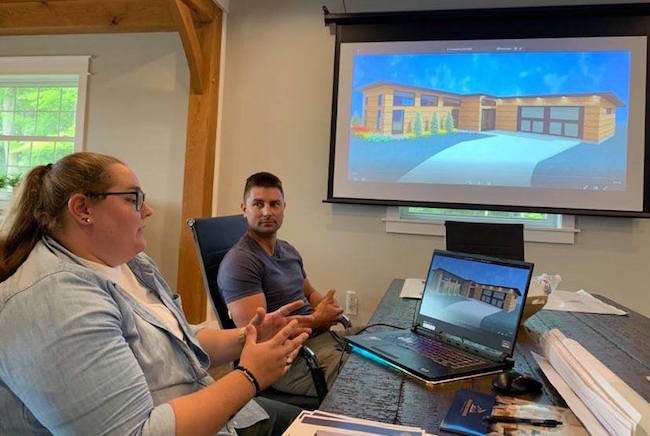Heritage Wind would pay county, 2 school districts about $400,000 annually; PILOT doesn’t include over $1.2 million to Town of Barre
BARRE – There will be a public hearing at 10 a.m. on Oct. 4 at Barre Town Hall about a proposed PILOT (payment in lieu of taxes) plan from Heritage Wind, where the company will pay over $400,000 annually to Orleans County, Albion Central School and the Oakfield-Alabama school district.
The PILOT doesn’t include the Town of Barre, where 33 proposed turbines would be located. The town negotiated a separate host community agreement with Heritage Wind’s parent company, Apex Clean Energy.
That agreement gives Barre 75 percent of the local municipal revenue for the project or more than $1.2 million annually. Barre also will receive an upfront payment of $250,000 if the project is approved by the state, and the host community agreement would also provide about $75,000 annually to the Barre Fire District.
Apex proposed $9,000 per megawatt annually or $1,663,200 in total municipal revenue in year one of the project to be divvied up among the Town of Barre, Orleans County, Albion school district (where 32 turbines would be located) and Oakfield-Alabama (which would have one turbine).
Barre would receive $6,750 per megawatt or 75 percent of that total of the 184.8 megawatt project or $1,247,400.
The other taxing entities would share $2,250 per megawatt capacity through the PILOT or $415,800 in year one. That increases by 2 percent each year through year 14, and then 2.5 percent annually for years 15 to 25.
The details of the PILOT haven’t been made public yet. But the Albion Board of Education in December 2020 voted to accept the PILOT agreement with Apex.
In December the terms of the PILOT called for to receive $1,091.91 per megawatt annually or $201,600. One of the 33 turbines also is proposed to be in the Oakfield-Alabama school district, which would receive $34.09 per megawatt or $6,300 annually.
Orleans County would receive $1,125 per megawatt for $207,900 in the first year.
Heritage Wind, back in December, also agreed to $50,000 to the Albion school district for a one-time “Heritage Wind Renewables Ecology, Clean Energy, and Sustainability Scholarship and Education Support Fund.” The money is to be spent at the discretion of the district. It could be used for scholarships, science fairs, student research projects, financial support for faculty in renewable energy field, a STEM lab or “however the district deems fit.” The $50,000 is to be paid within 15 days after completion of the project.
The Orleans Economic Development Agency will be leading the Oct. 4 public hearing and administering the PILOT. The agency on Friday agreed to pay $5,750 to the Center for Governmental Research to review Apex’s Job and Economic Development Impact (JEDI) wind model and to provide an estimate of the employment, earnings and output estimate for the project.
CGR also will estimate the difference between tax revenue anticipated under the PILOT agreement and the tax revenue that would be received, were the development fully taxable. The report also is to include the value of lease payments to property owners that would host the Heritage turbines. CGR is to provide the report by Oct. 1.
Heritage is projecting 201 construction jobs paying $14.7 million for the project, another 218 job impacts through the turbine and the supply chain at $16.3 million, 90 other positions affected though “induced impacts” at $6.3 million, and five more jobs for construction-related services at $600,000. The company puts the entire construction impact for jobs at 514 workers earning $37.9 million.
Annual operation and maintenance is forecast by the company to include eight onsite jobs at $800,000, 14 other jobs impacted through “local revenue & supply chain impacts” at $1.1 million, and 10 other jobs through “induced impacts” at $800,000 for an annual reoccurring impact of 31 jobs total at $2.6 million.
The eight local jobs by Apex include two administrative/secretarial at $18.60 per hour, two technicians at $29.06 per hour, and two site management positions at $46.50 per hour, according to an Apex filing with the state.

































































